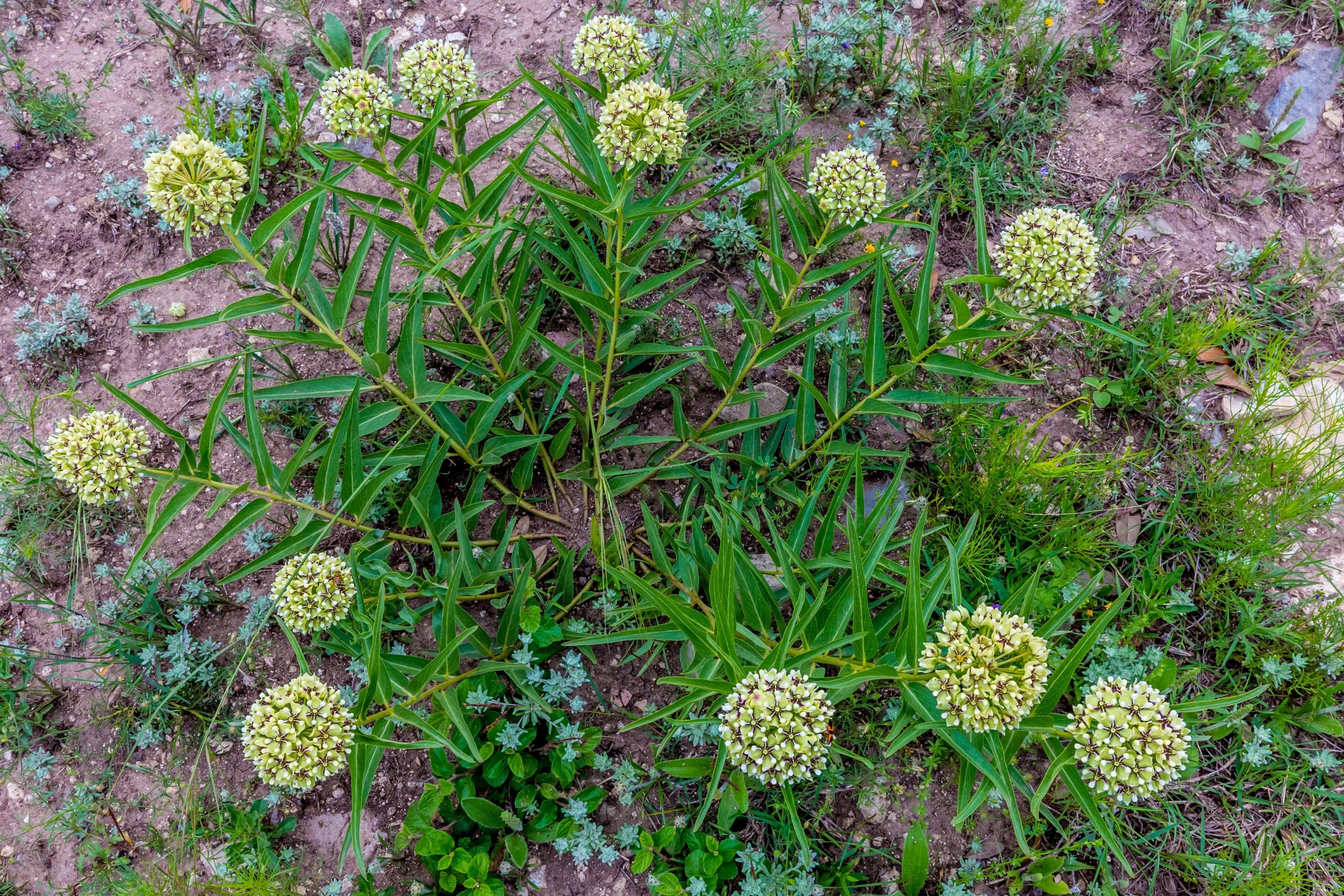Antelope Horns Milkweed
(Asclepias asperula)

Description
Asclepias asperula, commonly called antelope horns milkweed or spider milkweed, is a species of milkweed native to the Southwestern United States and northern Mexico. It is a perennial plant growing to 0.3–0.9 m (1–3 ft) tall, with clustered greenish-yellow flowers with maroon highlights. It blooms from April through June. Antelope horns is a common milkweed in Central Texas. It gets its name from the follicles (seed pods) that resemble the horns of antelope. You can easily spot the flower clusters (technically, umbellate cymes) in open meadows. Milkweed plants are a major food source for Monarch and Queen butterfly caterpillars and as with other milkweed plants, it bleeds white latex if a stem is cut and this sap is toxic to some animals and to humans. It also makes Monarch and Queen butterflies taste bad to potential predators, a nice defense mechanism. From a distance the flowers appear as tennis-sized spheres, but they are clusters of small green, purple, and white flowers. Each flower has 5 pale green petals that cup upward around 5 prominent white hoods (which store nectar). In cultivation, this species favors quickly draining soil that is high in inorganic matter, such as sand and rock chips. It can grow in loam and clay, if provided with adequate drainage and frequent dryness. Moisture level demands and tolerance depend upon the subspecies and possibly ecotype. The plant has a deep taproot, so it needs to have the deepest-possible pot if grown in a container and should not be waterlogged.
Taxonomic tree:







